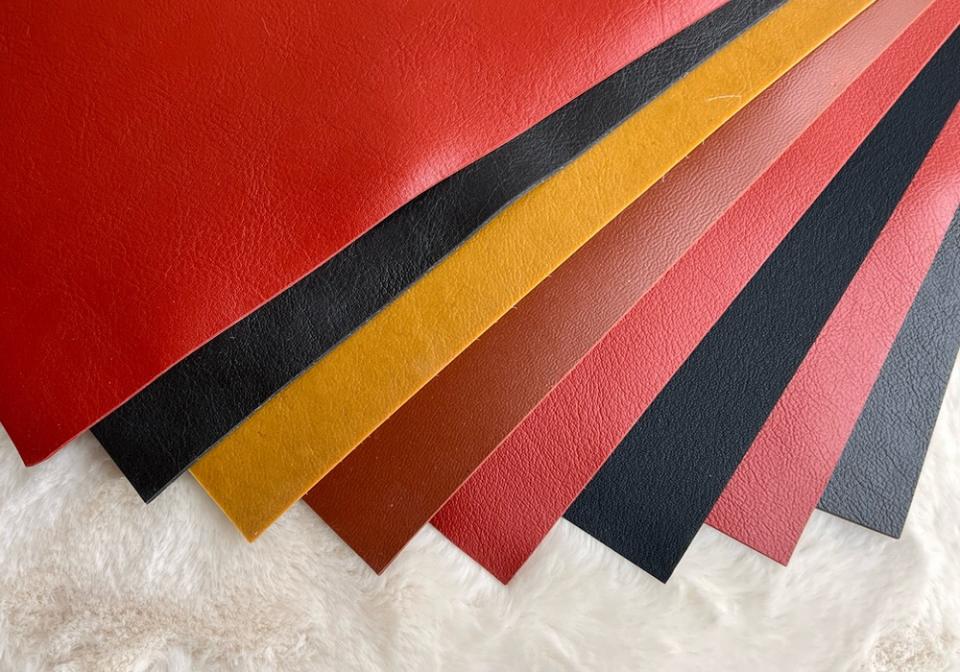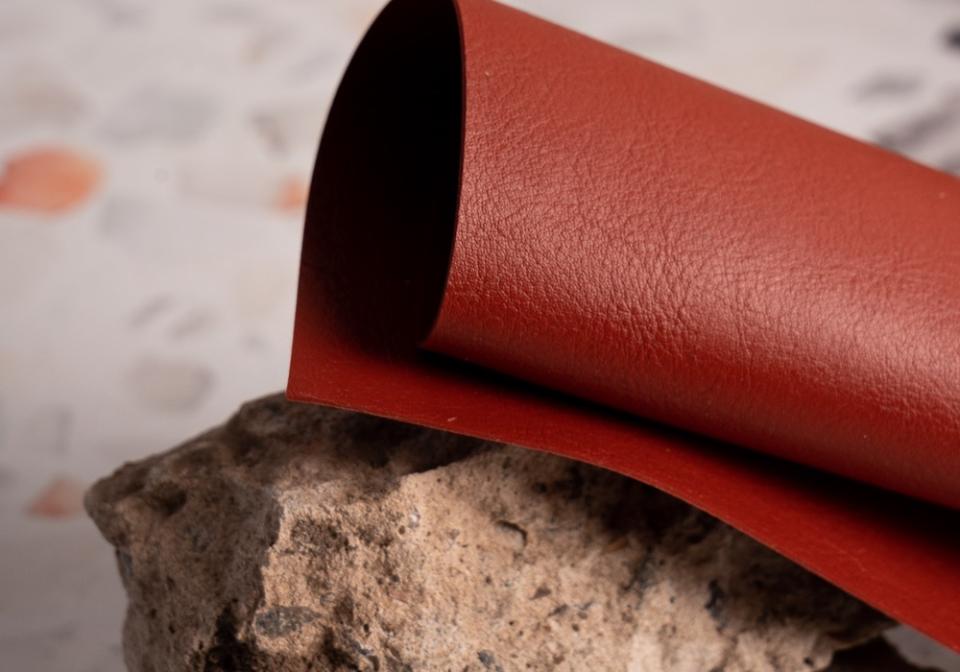Why This Bio-Based Alt-Leather Firm Wants to Give Small Brands First Dibs

Click here to read the full article.
Biomaterials are a hot commodity right now, but the larger quantities that many startups require to make the math work means that smaller firms risk getting left out.
Uncaged Innovations, a next-generation alternative leather purveyor based in upstate New York, wants everyone—large and modest—to get a fair shake. It’s assembling a so-called Uncaged Collective, a group of 15 small brands that will be the first to employ its tentpole material, which seeks to “reimagine” cowhide and exotic animal skins.
The “aha” moment for the group began during Uncaged Innovations’ early days of customer discovery.
“What we heard from a lot of the smaller brands is that when they contact bigger players, they don’t even get called back,” Stephanie Downs, the White Plains firm’s co-founder and CEO, told Sourcing Journal. “They can’t even get access to samples.”
Downs gets it. Bigger innovators want to go to market with boldface names because it makes a splash. Namedrop Lululemon or Stella McCartney and the headlines practically write themselves. But smaller outfits have their advantages, she said. For one thing, they move fast, which is exactly her kind of speed.
“[When] you talk to the founder of a small brand, you’re also simultaneously talking to the head designer and the sourcing person,” said Downs, who previously founded a company that quickly grew to become one of India’s largest plant-based meat providers. “We have some small brands that we sent material to and within four days they developed four different prototype pieces and sent us pictures back.”
Not that Uncaged Innovations won’t be working with the big guns. Downs said it will be taking on a “two-pronged” approach, allowing larger brands to take their time prototyping and cutting through red tape while hurrying the smaller ones along. The Uncaged Collective will have a global focus, not just one that’s European and North American-centric, she added. Each participant will contribute a piece that’s completely their own: one might opt to make a men’s wallet, while another might choose a women’s clutch or a pair of earrings. Marco Del Maso, an Italian luxury jewelry line that has signed on, plans to make men’s bracelets from the bioleather. So far, the bovine mimic performs identically to the real McCoy, a representative from the brand said.
“We want the pieces within the Collective to be unique so that they can also promote each other and support each other,” Downs said. “They won’t have to collaborate together in any way.” The idea is to have a “constant flow of things that are coming to market,” one after another, she added.

Downs, who co-founded the Material Innovation Initiative with Nicole Rawling in 2019, hears the clock ticking. She launched Uncaged Innovations in August 2020 because she was feeling both excited and impatient about the vegan alt-leather space. Innovations made with mushroom mycelium, apple skin or grape waste, she said, have been around for more than a decade, yet nobody could simply waltz into a mall and buy them.
“So I wanted to get into the game and try and develop an innovation that we could scale faster, that could meet the quality that the brands were looking for and [could achieve] decent price points,” Downs said. So she partnered with Xiaokun Wang, a bioengineer who specialized in retinal regeneration. Together they found that no single plant ingredient was able to replicate all the characteristics of incumbent leather. Instead, it requires a “universe” of bio-based materials.
What came to pass is not so much a single process but a platform—one that allows Uncaged Innovations to fuse various feedstocks, including grain byproducts, algae, plant oils and flower extracts, in configurations that suit different look, feel and performance needs. The company can even edit the fragrance to make the product smell like its bovine counterpart. Unlike many kinds of ersatz leather, the company’s output contains no petrochemicals, Downs said. Brands might choose to coat it with something fossil-fuel-derived to increase durability, but the product itself doesn’t need to be coated. Nor does it require a backing.
Uncaged Innovations’ White Plains pilot facility, which was completed in December, currently tweaks and churns out one-square-foot pieces for iterating and prototyping. Next month, it will be trialing its first full-scale production, beginning with 2-by-50-meter rolls, though it can go up to 800 meters in length if coaxed. End to end, the imitation cowhide takes just a couple of hours to make, Downs said.
But where Uncaged Innovations diverges from most of its competitors is its decision not to keep everything in-house. Before it set up its White Plains facility, it was already working with another supplier in New York. Downs plans to continue this tack by onboarding different partners, first in the United States, then Europe and Asia, so production can scale up more quickly.
“It takes a lot of capital to build a factory and it takes years,” Downs said. “We’re just looking to bridge the gap. I feel like there’s a lot of innovations out there, but, for the most part, we’re still just seeing capsule collections or one piece that comes out in a limited supply. We’ve got to start building to scale so it can enable us to get to market much faster.”
Other upsides of this approach: It will shorten the biomaterial’s supply chain while minimizing pollution from its transportation.

Downs said that the product is not only highly biodegradable but 100 percent recyclable as well.
“The brands that we’re talking to are very excited about the fact that it can be completely recycled back into our material,” she said. “So if there are reclaim programs in place, if we can get the material back, we can fully recycle it.”
Clapped in NDAs, Downs isn’t able to name the brands she’s been talking to, though she said they include the largest fashion houses, some major footwear brands and a couple of large automotive companies. Uncaged Innovations is also garnering investor interest. It recently secured $2 million in pre-seed funding. In May, it will begin an equity seed round, the proceeds of which will help the firm grow.
The longtime vegan isn’t worried about things getting a bit crowded.
“There are a lot of players on paper, but from what we hear from brands, there’s very few players that can send them a swatch that’s bigger than an inch,” she said. “There’s a lot that gets weeded out very quickly.”
Another swerve from its rivals will be Uncaged Innovations’ focus on the middle market. Downs said she’s watched too many companies struggle with ultra-luxury because the sector is so “deeply rooted” in genuine leather, making the transition a tough one to make. Fast fashion is another non-starter due to its low price points.
“So I think the middle market is a smart place to start,” she said. “They’re high users of leather, but it’s not their whole identity. And they’re used to paying a decent price.”
One thing all biomaterial companies need to get better at is communicating about their products—“what do we call this on the labeling, how do we position that, how do we educate the consumer about why these are better,” Downs said. And words do matter. One study she conducted in her past life, for instance, found that “plant-based” meat sold 70 percent better than an identical “vegan” version. In fashion, to give a more salient example, “vegan” is almost synonymous with synthetic. “Vegan leather,” as a descriptor, is also verboten in Italy and Portugal, which call it “oxymoronic” and misleading, respectively.
“There’s a lot around terminology,” she said. “That I think is a lesson that we’re going to need to navigate.”

